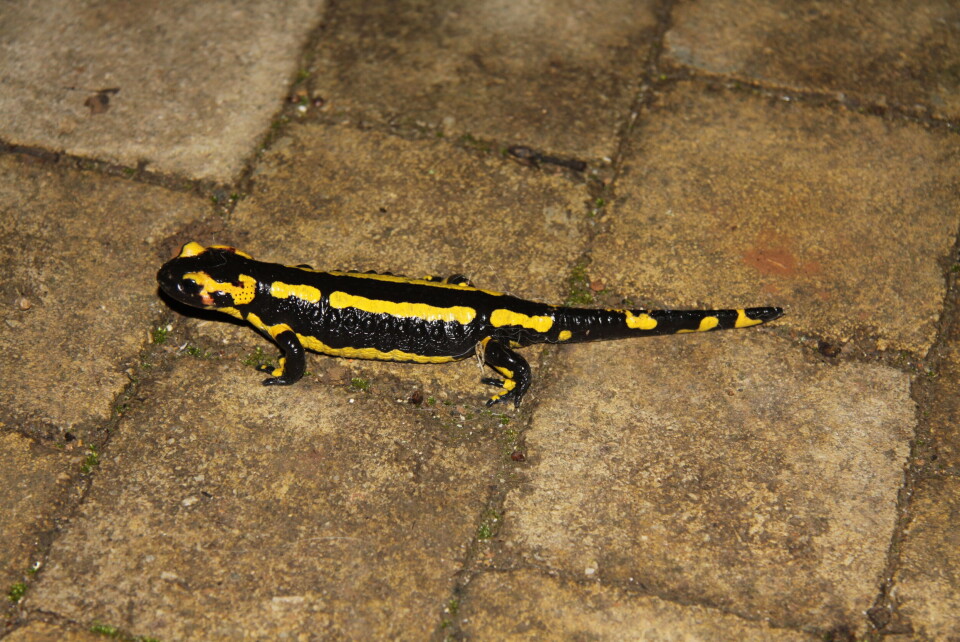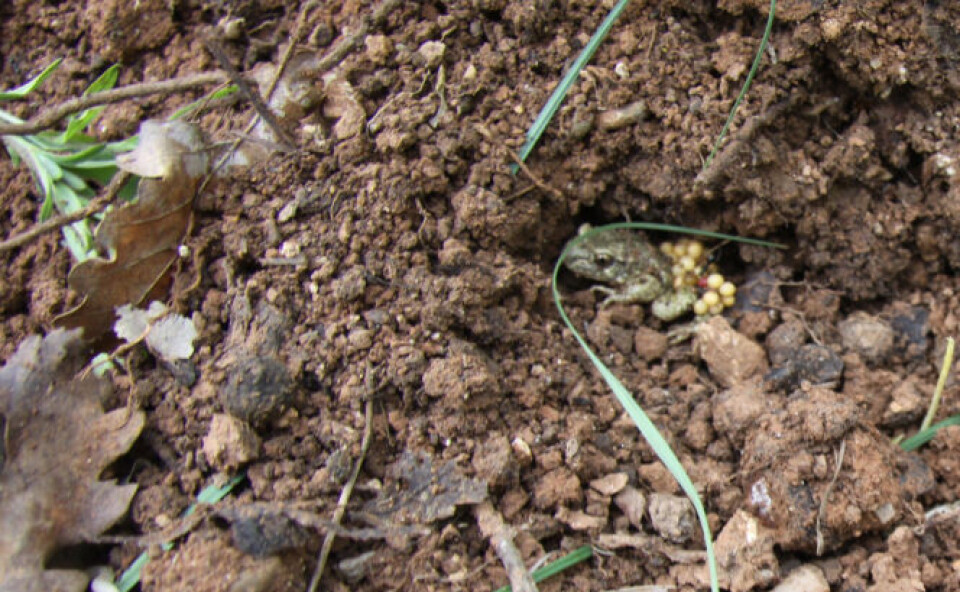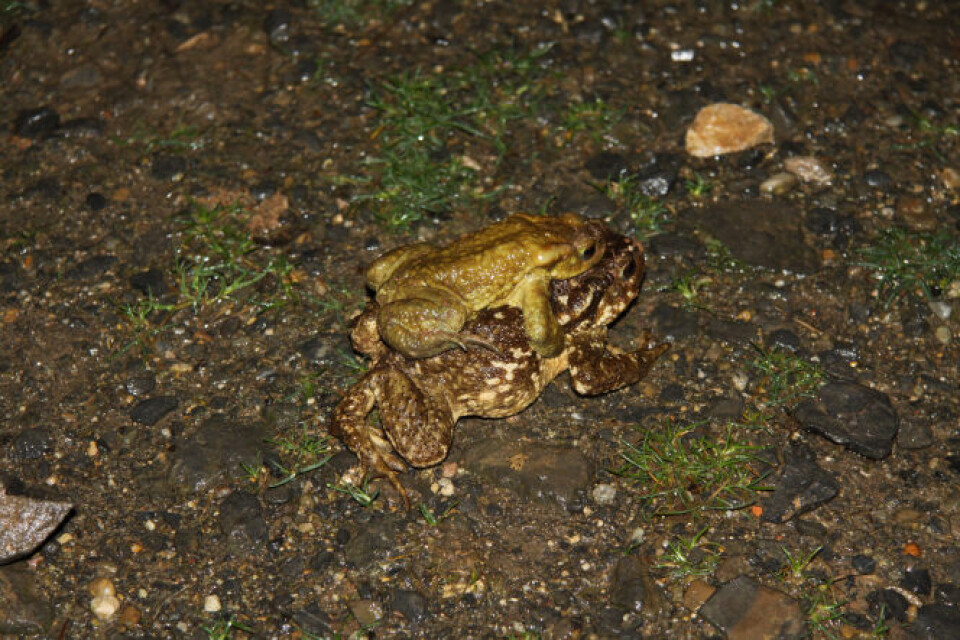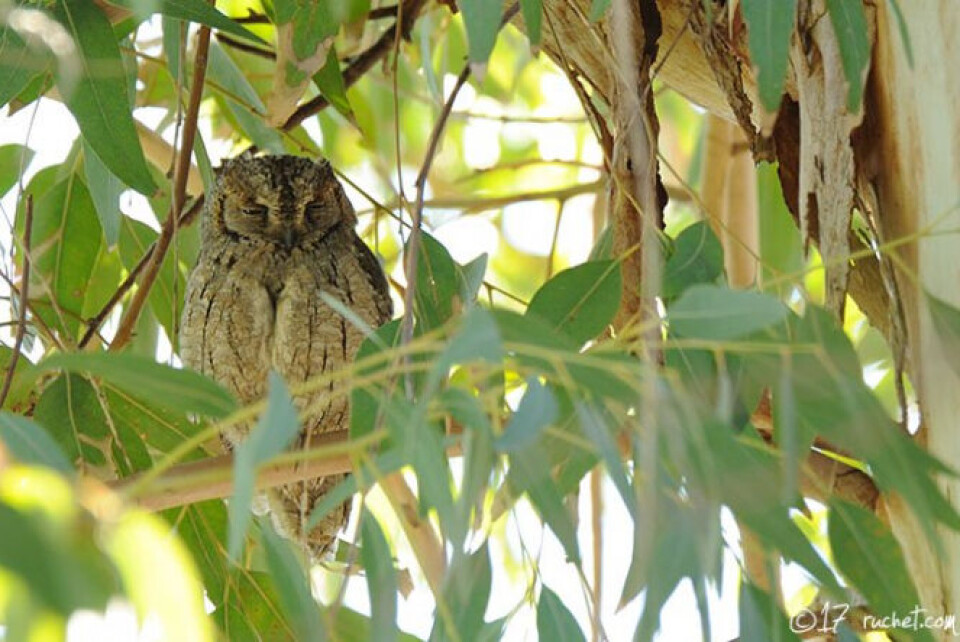-
Wasps, mosquitoes, hornets, ants: how to deal with summer insects in France
Natural repellents can keep some pests away
-
What to do if stung by a jellyfish at a beach in France
Swimmers may spot the aquatic animal close to the shoreline
-
Are dogs allowed on public transport in France or are they banned?
Rules differ depending on the type of transport used
Salamanders and singing toads in France
Nature lover, Jonathan Kemp, spots a rich variety of species in his local environment

All it took was a just a splash of rain, and the life that had been patiently waiting hidden underground or in some secluded crevice burrowed all the way up to the surface as night fell.
The first to appear was a fire salamander (salamandre tachetée) slowly waddling across the terrace, an impressive looking beast with its bright yellow spots and stripes on the shiny black background skin.
The brightness of this skin colour is deliberate; a warning to potential predators that it is not good to eat, an advertisement of the toxic glands situated around the head and the skin of the back.
I was not going to touch it even with gloves on – they are quite capable of shedding their tails and limbs as a defence mechanism and then growing them back nearly perfectly, a process called regeneration.
It has been only relatively recently that the mechanisms of how this works have been understood, and is no doubt being studied to see if the ability could somehow be transferred to human beings.
Infant humans can do this to a limited extent, but adults cannot.
Ideal habitat
They are amphibians, giving birth to live larvae and depositing them directly in water, and our damp, deciduous wood sloping down to the stream is the ideal habitat for this strange animal.
This particular one is probably not fully grown, being about 18 centimetres long; they can exceed 30 centimetres.
The myth that they are so cold that they can resist fire is nothing more than a myth, but historically they have always been associated with fire, an association probably originating from their habit of hibernating in rotting logs, and then emerging when the log was put onto a fire.
Melodic toads

Next night we were serenaded by at least three midwife toads (crapaud or alyte accoucheur).
These lovely little toads wake up from their hibernation and start to call, a repeated single note at a certain pitch that can be confused with the scops owl (petit duc scops).
It is possible, with careful listening, to hear the difference in the calls, the scops owl’s being slightly longer and more whistled.
The following night, it was obvious that at least one of the ‘singing’ male toads had got lucky and found himself a female.

He will mount on her much larger back and grasp her under the front ‘arm’ pits.
Here he will hang on, if possible, until she lays a string of eggs (bracelet), which he will then fertilise.
To stimulate her to lay he will give the female a rapid massage with his feet and at the same time compress her flanks.
He then wraps the eggs around his back legs – thus the name – and will carry them, going down every evening to a water point to keep them moist, for a length of time that can vary from three to eight weeks, until they are ready to hatch into tadpoles and drop off in the water.
He might, in a good year, be carrying the eggs of up to three females, up to 150 eggs.
Above is a photograph I took in a previous year showing the male emerging in the evening with his precious cargo wrapped around his hind legs, on his way down to the stream to bathe them.
In France, they are considered vulnerable, and are a fully protected species.
Scops owls from the Sahara

Scops owls arrive back from their wintering territories south of the Sahara in mid-spring.
With careful listening, the way to tell their calls apart from the midwife toad’s is to detect the slightly longer note, and a fuller musical quality, whilst the toad has a straighter, more mechanical sound.
What’s more, the toads cannot move rapidly from tree to tree, so if this happens, it’s an owl!
These charming little owls are quite capable of nesting in villages, parks and gardens, and when they start to repetitively call just outside ones bedroom window some people get annoyed, as they can be persistent.
They are small (only as big as a starling), with a body about as big as a clenched fist.
Their prey is mainly insects, and generally they hunt at night, avoiding twilight hours.
A friend put up nesting boxes in his hamlet, and was successful in enticing the owls to use them. Not sure what his neighbours thought.
For those that need help in identifying bird calls and songs – as I do from time to time – there is a newish free app to put on your smartphone: Merlin Bird ID, published by the Cornell lab and, for most common birds at least, seems to be pretty accurate.
It is best on sound identification, obviously it is harder to get accurate photos on a smartphone, but it will identify from photos too.
Standing still, you record, and it will give you the nearest matches, that can then compare with other recordings, confirm it is your bird.
Highly skilled ornithologists will be sniffy about resorting to such means; and, of course, it is better to have remembered the sound in your own mind; but as an aid to getting you to that point it is well worth downloading.
It gives calls as well as songs too, and you can choose the world zone that you find appropriate.
Interestingly as I lose some of my hearing with age, it can hear calls and songs that I cannot, so that is good if you are trying to count the birds in your garden, for instance.
It does seem to drain the phone battery quickly, however.
Related articles
Gardeners in France told to stop cutting hedges in bird nesting season
‘The first baby hedgehog we rescued was love-at-first-sight’
























